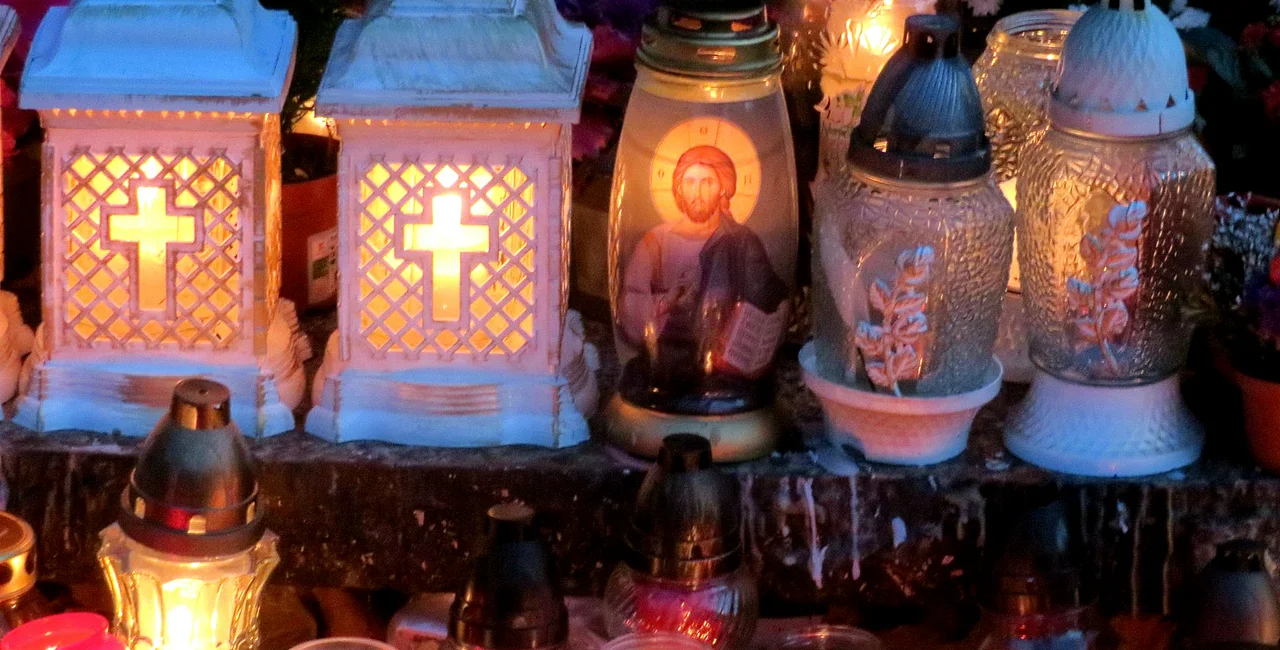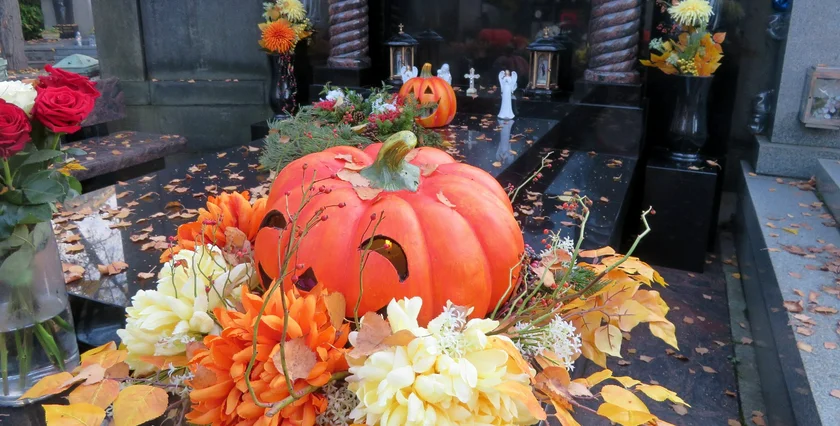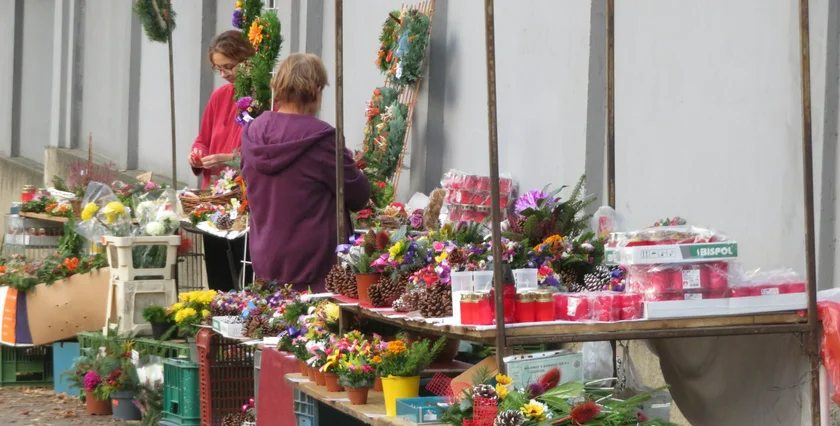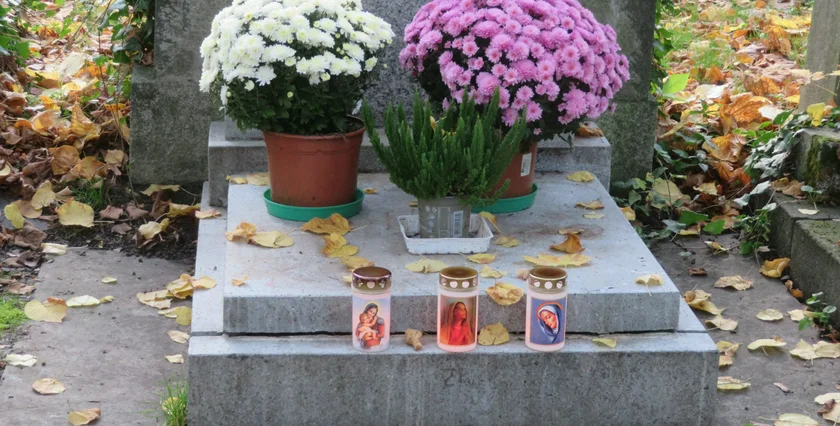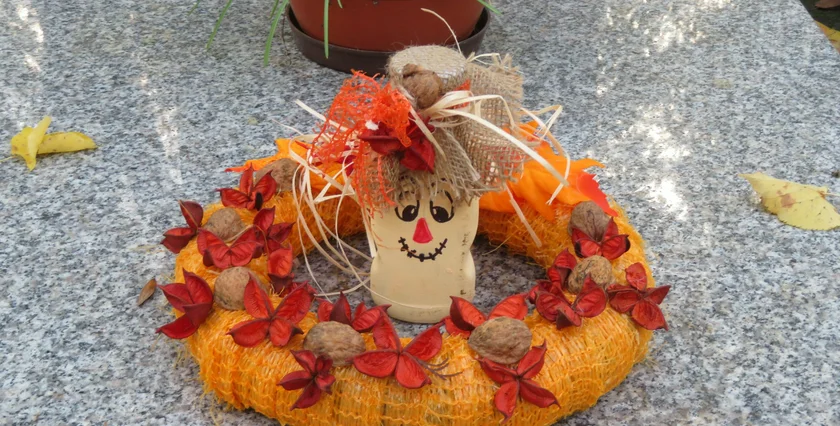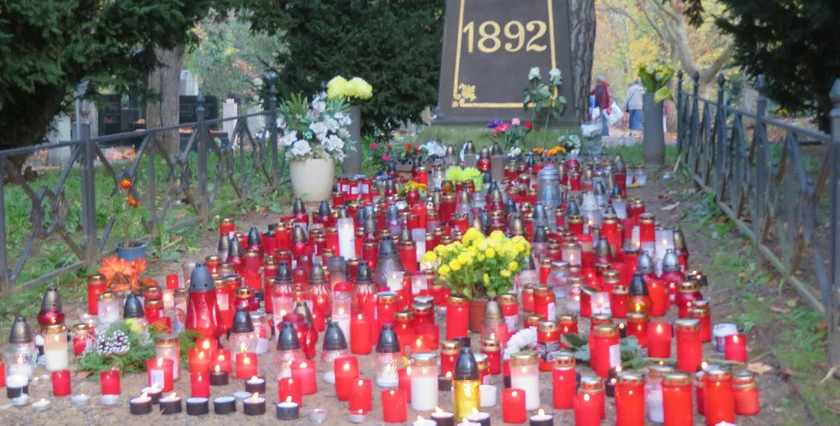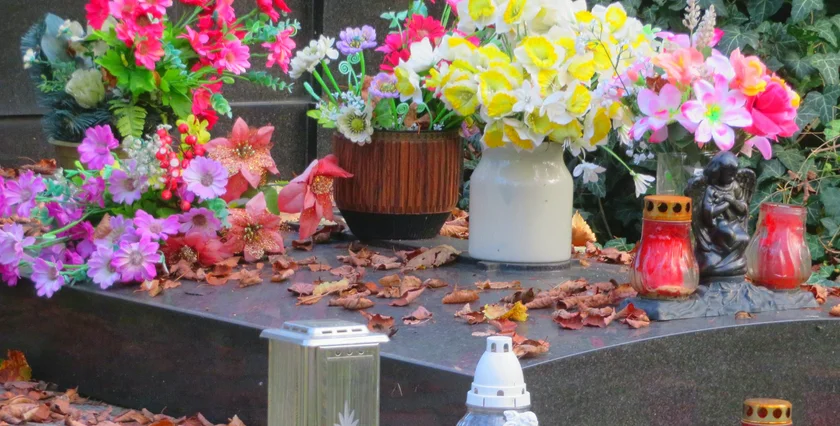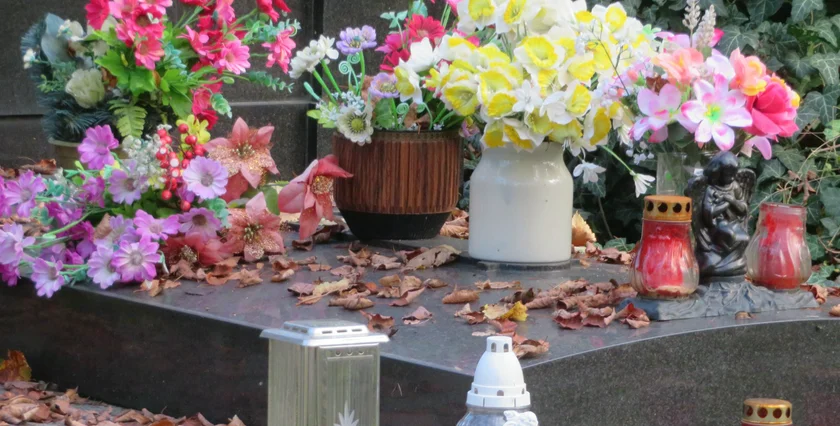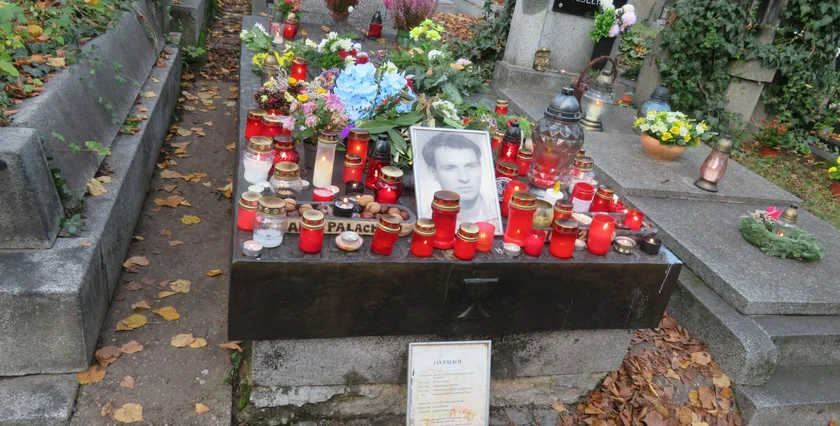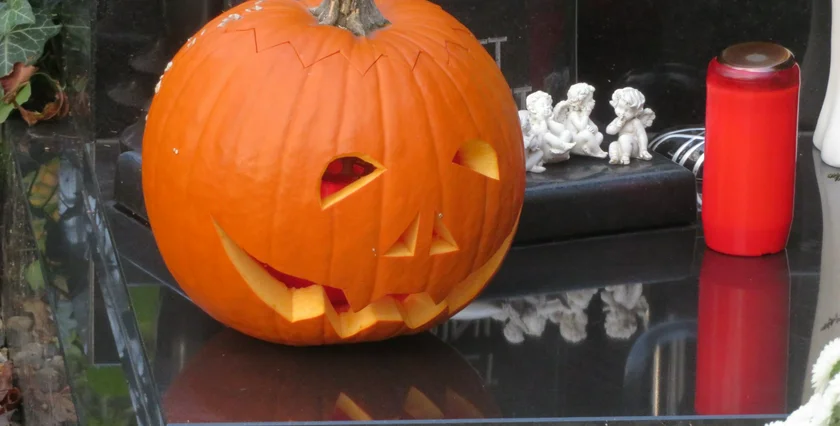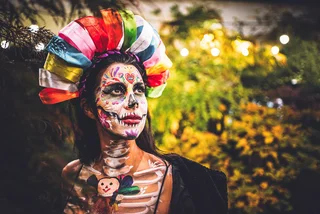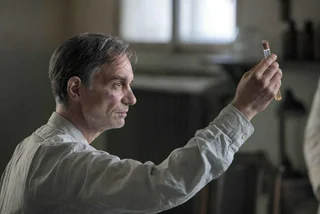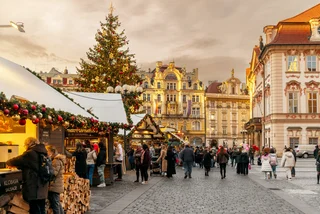The Czech “Dušičky” tradition, known in English as All Souls’ Day, is celebrated every year on Nov. 2. On that day, families go to the cemetery to clean up and decorate the graves of loved ones as well as pay tribute to significant Czechs.
But the event is anything but somber. Many families leave candles and elaborate floral displays. Children’s graves are often adorned with small toys and this year, after a visit to Prague's Olšany Cemetery, we can see carved jack-o-lanterns and orange flower displays representing a melding of Halloween and dušičky tradition (going to a cemetery in costume, however, is seen in poor taste).
The origins of Dušičky
The word “Dušičky” comes from the Czech word “duše,” which means “soul.” The day has several more official titles such as “Památka zesnulých” (Memorial of the Departed) or “Vzpomínka na všechny věrné zesnulé” (Remembrance of All the Faithful Deceased). While the celebration’s roots are in Roman Catholicism, it is also recognized by other Christian denominations in the Czech Republic.
The late Roman Catholic Cardinal Miloslav Vlk once said Dušičky was the second largest religious holiday in the Czech Republic after Christmas, and that it is was celebrated by both believers and non-believers. He added that living flowers are meant to represent the belief in eternal life while candles symbolize resurrection.
According to Czech folklore, the souls of those in Purgatory – the place in between Heaven and Hell – are released for one day starting on the eve of All Souls Day. These souls are still going through the purification or purging process before they can reach Heaven.
Many other cultures have similar traditions. The Slavic ones seem to be influenced by Celtic traditions related to the autumn festival of Samhain. Dia de los Muertos, the Day of the Dead tradition in Mexico, also takes place in the first days of November.
While the practice of visiting cemeteries to leave candles or flowers remains, these traditions were observed centuries ago:
Bohemians would fill lanterns with butter so the souls of departed loved ones could ease the pain of their wounds.
They would also drink or splash themselves with cold milk to cool the pain of their spirits.
South Bohemians baked pastries in the shapes of bones. Groups of singers would go from door to door ask for pastries, similar to Christmas carolers (or trick-or-treaters)!
Notable Czech graves
The city’s largest resting place is the Olšany Cemeteries (Olšanské hřbitovy), which is actually 12 cemeteries combined into one. The oldest section is by the Olšanské náměstí tram stop and the Atrium Flora shopping center. The newer part is by metro stop Želivského, with the entrance at the tram stop Mezi Hřbitovy.
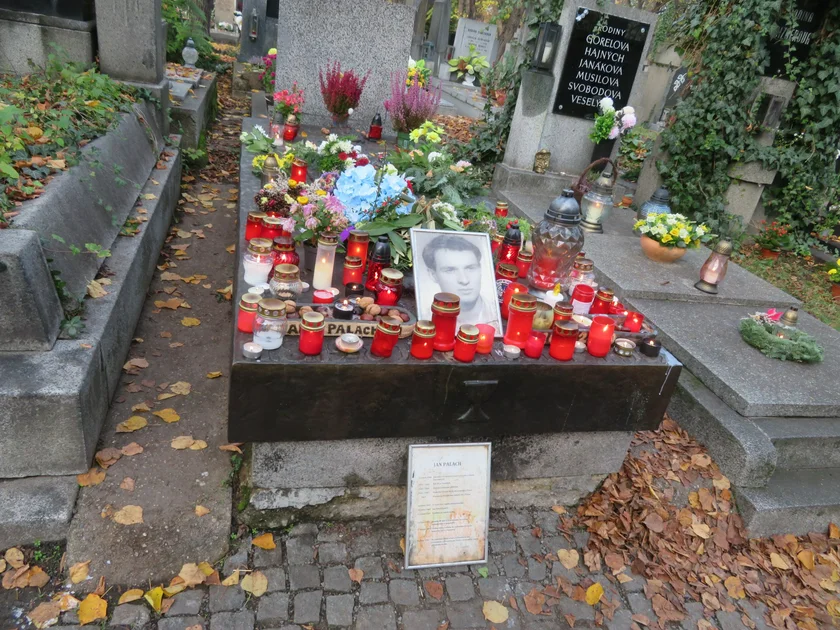
Among the most famous occupants of Olšany Cemetery is Jan Palach, whose grave can be found near the main entrance. The grave of Palach, who died in 1969 after setting himself on fire to protest the Soviet-led invasion of Czechoslovakia, is a popular spot for people to stop, leave a candle, and observe a moment of silence.
Sokol movement founder Miroslav Tyrš, comedians Jan Werich a Jiří Voskovec, faith healer Jan Mikolášek (who was the subject of the film “Charlatan”), and a host of artists and other famous Czechs can be found there are well, and all have a few tributes left by fans.
Olšanské hřbitovy also has graves of British Commonwealth soldiers and pilots from World War II, as many other graves from both world wars and other conflicts including the Napoleonic Wars.
Close to Olšanské hřbitovy you can find the Vinohrady Cemetery (Vinohradský hřbitov), which has the tomb of former President Václav Havel in an alcove on the side of the church. The tombs of comic strip writer Jaroslav Foglar and investigative journalist Egon Erwin Kisch are also here.
Adjoining this cemetery is the modern Strašnice Crematorium (Krematorium Strašnice). Across the street from them is the German Evangelical Cemetery (Německý evangelický hřbitov), which reopened a few years ago after having been closed since the end of World War II.
Go to the cemetery in Vyšehrad, next to the Basilica of Sts. Peter and Paul, to pay respects to a range of celebrated Czechs from Antonín Dvořák to patriot and communism victim Milada Horáková and appreciate the most artistic tombstones. The tomb of singer Karel Gott can be found in the Malvazinky Cemetery in Prague 5, as he had long been a resident of the district.
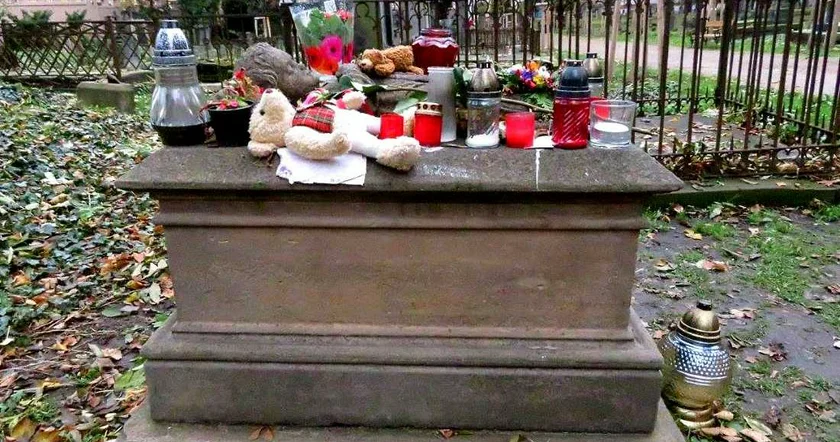
A tradition that has grown over the years is leaving remembrances at the grave of a young girl in Malá Strana Cemetery (Malostranský hřbitov) located in Smíchov. A legend claims that the child was an angel. So many people, though, leave tributes there that the cemetery administration now discourages it.
EXPATS EXPLAINS: Where and how to pay your respects
- Most of Prague’s cemeteries will be open until 6 p.m on Nov. 1 and until 8 p.m. on Nov. 2. The sun now sets before 5 p.m., which gives people a chance to see the cemeteries lit by candles in the dark. Photography is allowed in most cemeteries, but people should be respectful of a family’s private moments.
- This online database of graves, allows you to plug in the deceased's name and cemetery to find the section and grave number to visit. Most cemeteries have maps near the entrance listing the more notable people buried on their premises and also showing the sections.












 Reading time: 4 minutes
Reading time: 4 minutes 